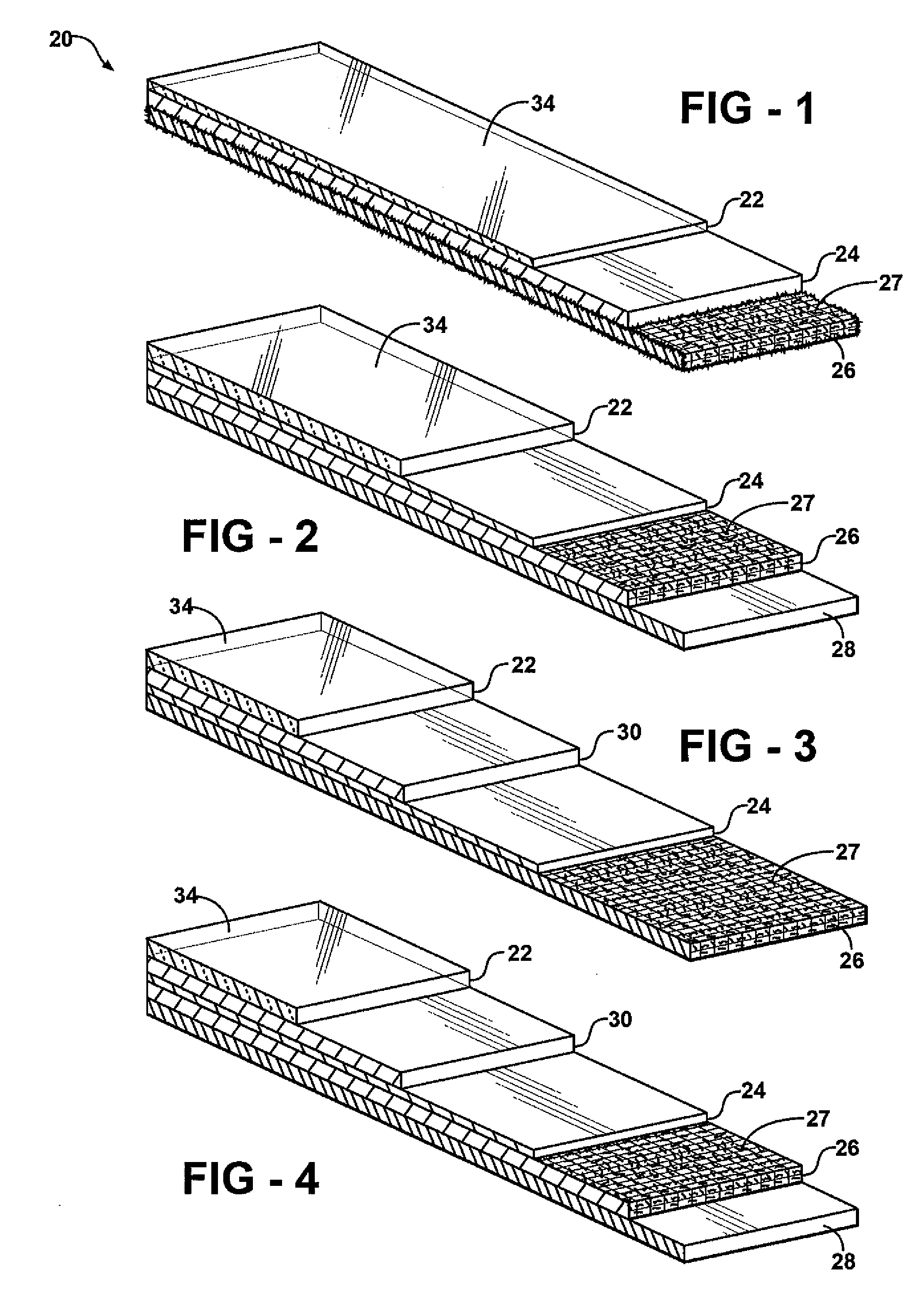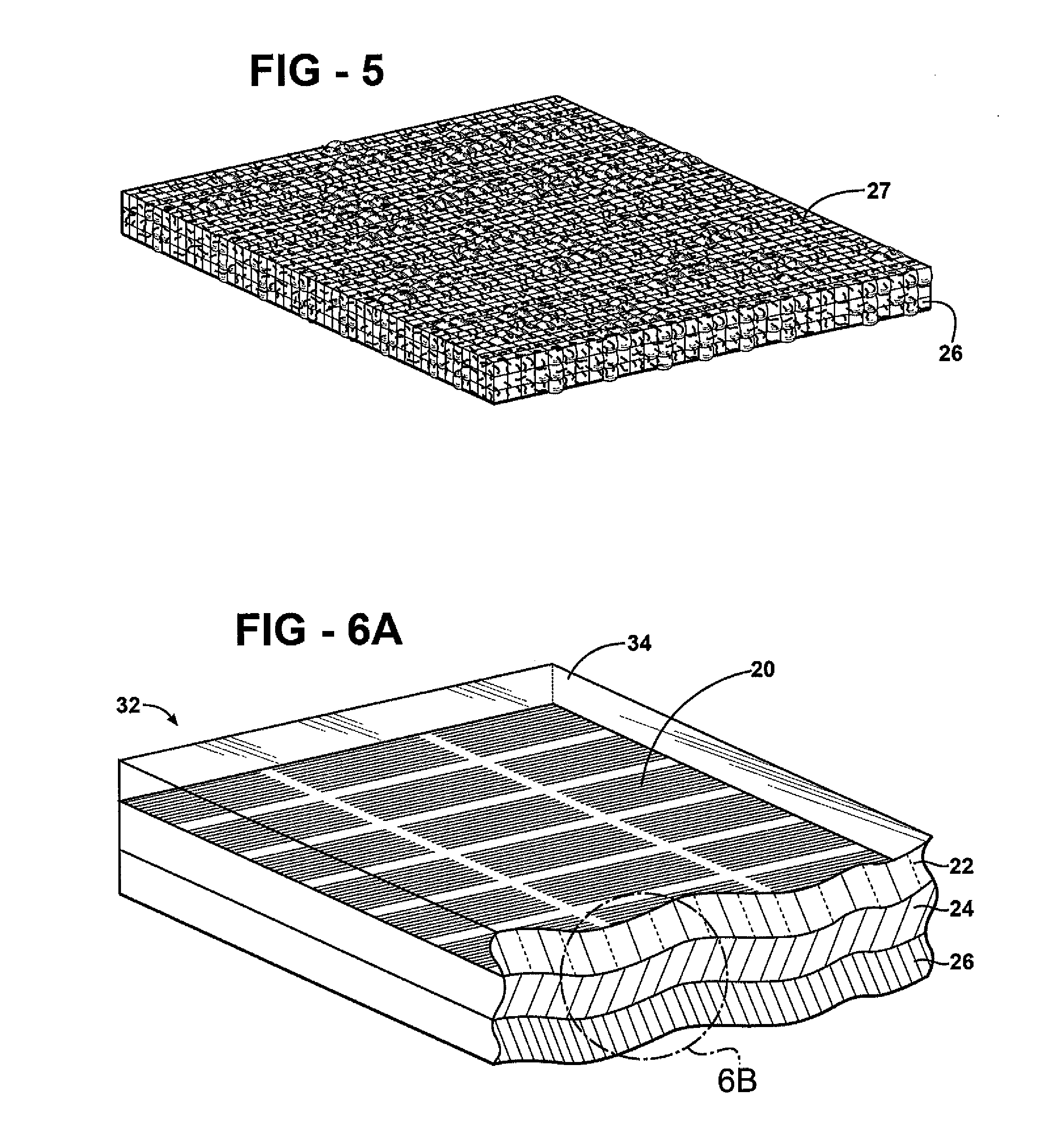Photovoltaic Cell Module And Method Of Forming
a photovoltaic cell and module technology, applied in the direction of chemistry apparatus and processes, sustainable manufacturing/processing, final product manufacturing, etc., can solve the problems of increasing cost, slow and inefficient process, difficult to control the thickness of the tie layer, etc., to reduce the flammability of the module, reduce the loss or leakage of silicone composition, and provide structural strength
- Summary
- Abstract
- Description
- Claims
- Application Information
AI Technical Summary
Benefits of technology
Problems solved by technology
Method used
Image
Examples
examples
Formation of Modules:
[0153]Two modules (Modules A and B) are formed according to the method of instant invention. In addition, four comparative modules (Comparative Modules A-D) are also formed but not according to the method of the instant invention. In the Modules A and B, a plurality of fibers extends laterally across a second layer to a periphery of the Modules on both ends of the Modules.
[0154]More specifically, Module A includes:
[0155]A 156 mm×156 mm×3.2 mm first outermost layer (glass) having a light transmittance of at least 70 percent as determined by UV / Vis spectrophotometry using ASTM E424-71;
[0156]A 156 mm×156 mm×200 μm photovoltaic cell disposed on the first outermost layer;
[0157]A 5-mil second layer uniformly disposed on and across the photovoltaic cell and including a textile (non-woven fiberglass) as the plurality of fibers that is at least partially coated with a first liquid silicone composition; and
[0158]A 156 mm×156 mm×125 μm supporting layer (Tedlar®) disposed o...
PUM
| Property | Measurement | Unit |
|---|---|---|
| light transmittance | aaaaa | aaaaa |
| thickness | aaaaa | aaaaa |
| light transmittance | aaaaa | aaaaa |
Abstract
Description
Claims
Application Information
 Login to View More
Login to View More - R&D
- Intellectual Property
- Life Sciences
- Materials
- Tech Scout
- Unparalleled Data Quality
- Higher Quality Content
- 60% Fewer Hallucinations
Browse by: Latest US Patents, China's latest patents, Technical Efficacy Thesaurus, Application Domain, Technology Topic, Popular Technical Reports.
© 2025 PatSnap. All rights reserved.Legal|Privacy policy|Modern Slavery Act Transparency Statement|Sitemap|About US| Contact US: help@patsnap.com



